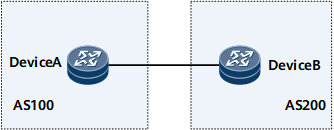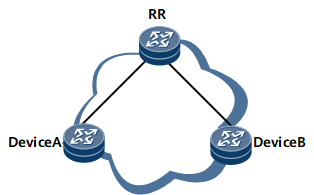BGP ORF
Outbound Route Filtering (ORF) is used to enable a BGP device to send the local routing policy to its BGP peer. The peer can use the local routing policy to filter out unwanted routes before route advertisement.
In most cases, users expect the carrier to send them only the routes they require. Therefore, the carrier needs to maintain a separate outbound policy for each user. ORF allows carriers to send only required routes to each user without maintaining a separate outbound policy for each user. ORF supports on-demand route advertisement, which greatly reduces bandwidth consumption and the manual configuration workload.
Prefix-based ORF, defined in standard protocols, can be used to send prefix-based inbound policies configured by users to a carrier through Route-Refresh packets. The carrier then filters out unwanted routes before route advertisement based on the received inbound policies, which prevents users from receiving a large number of unwanted routes and saves resources.
Applications
On the network shown in Figure 1, DeviceA and DeviceB are directly connected, and prefix-based ORF is enabled on them; after negotiating the prefix-based ORF capability with DeviceB, DeviceA adds the local prefix-based inbound policy to a Route-Refresh packet and then sends the Route-Refresh packet to DeviceB. DeviceB uses the information in the packet to work out an outbound policy to advertise routes to DeviceA.
As shown in Figure 2, DeviceA and DeviceB are clients of the RR in the domain. Prefix-based ORF is enabled on all three NEs. After negotiating prefix-based ORF with the RR, DeviceA and DeviceB add the local prefix-based inbound policies Route-Refresh packets and then send the packets to the RR. Based on the Route-Refresh packets, the RR uses the information in the Route-Refresh packets to work out the outbound policies to reflect routes to DeviceA and DeviceB.

